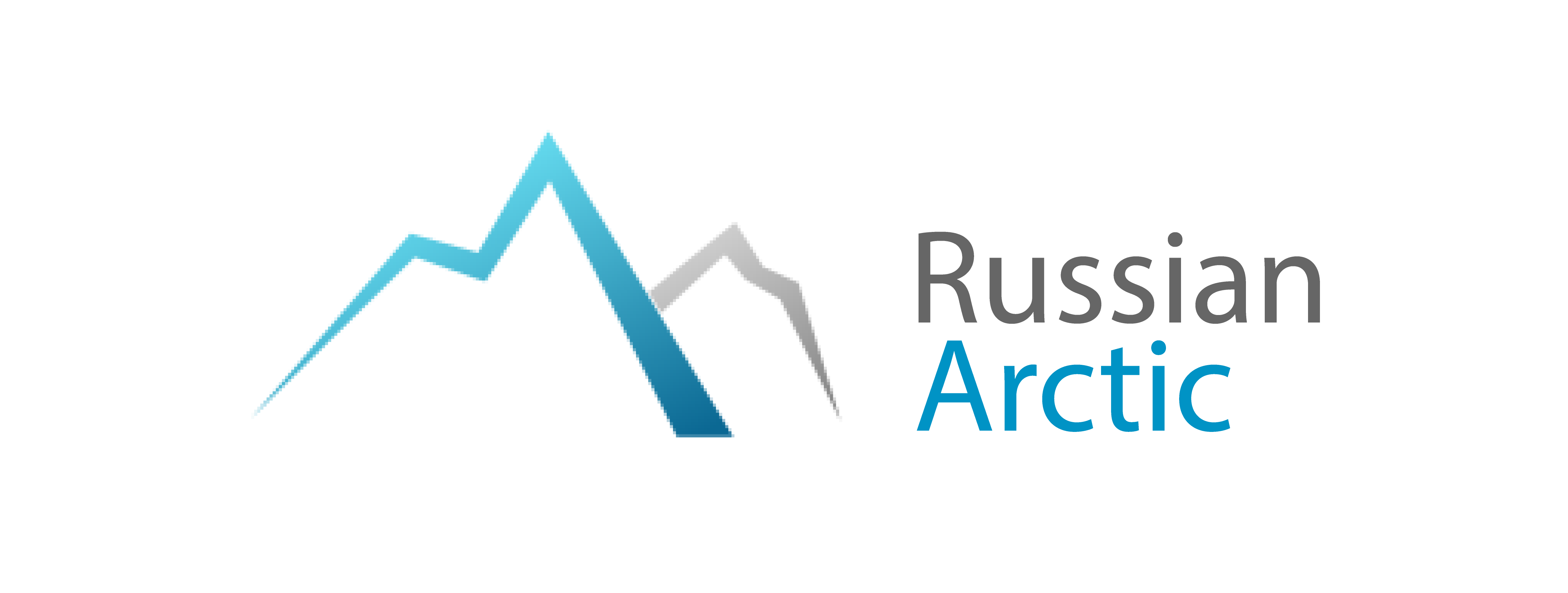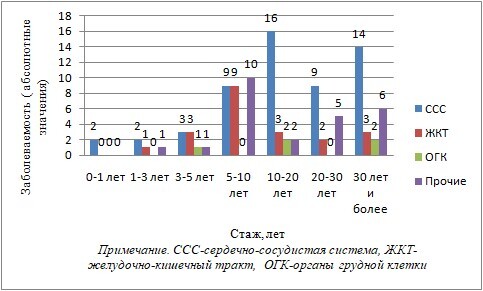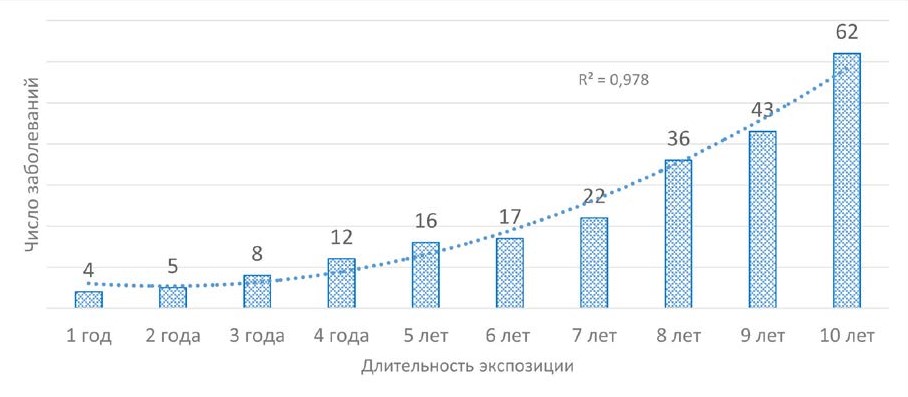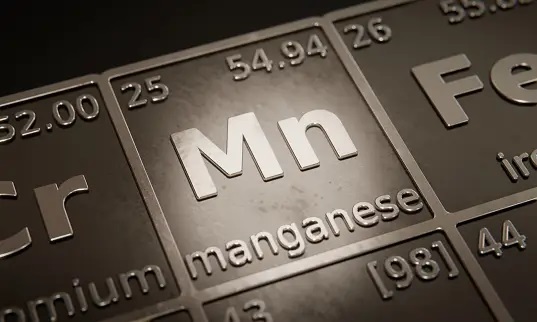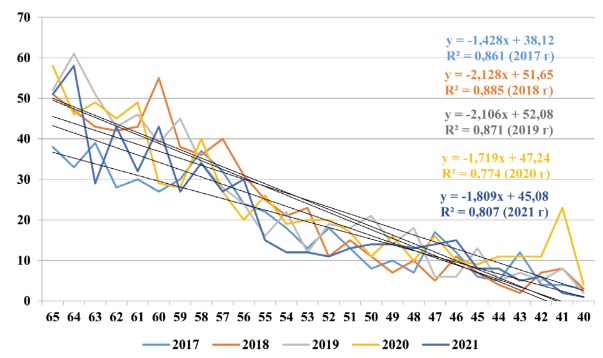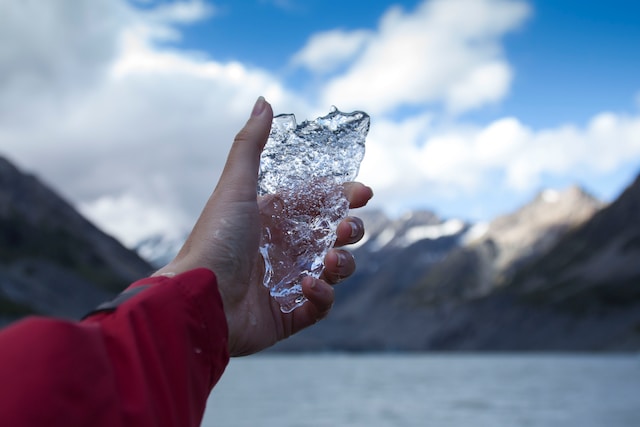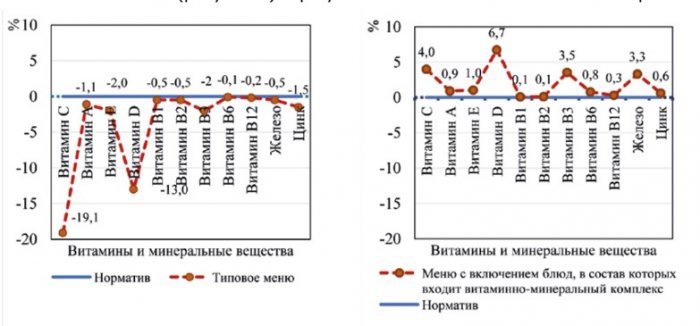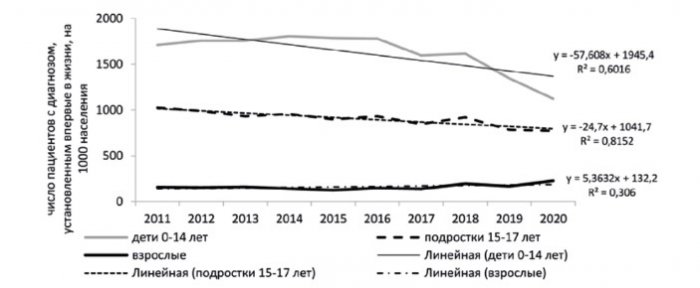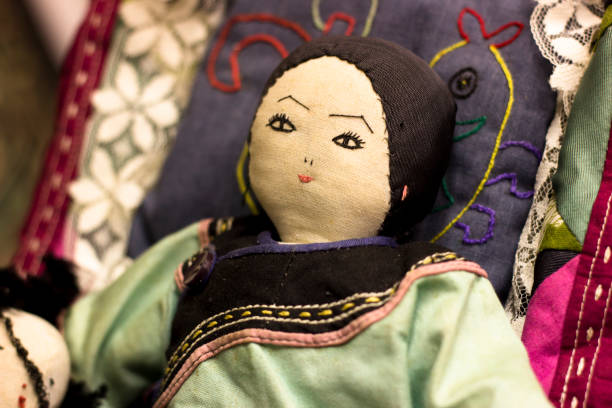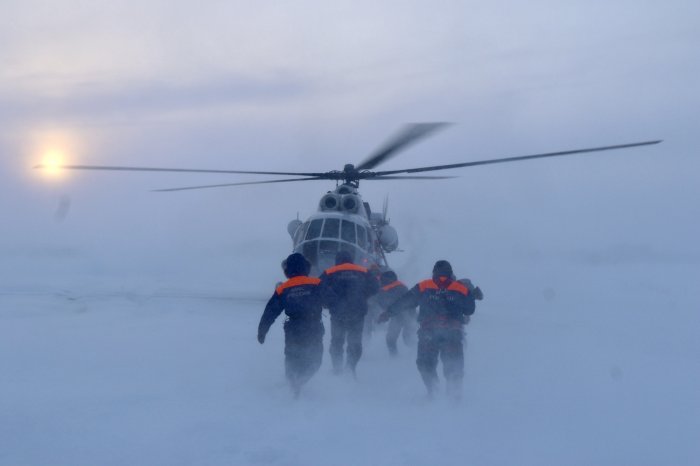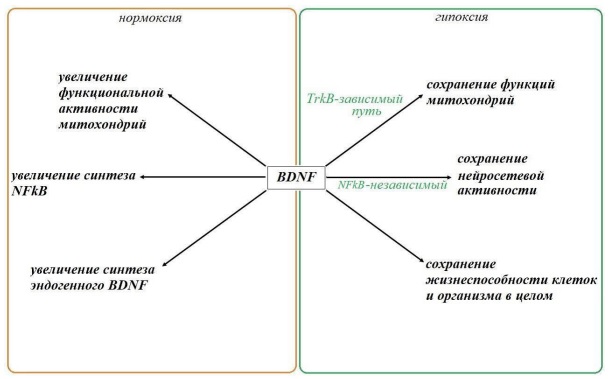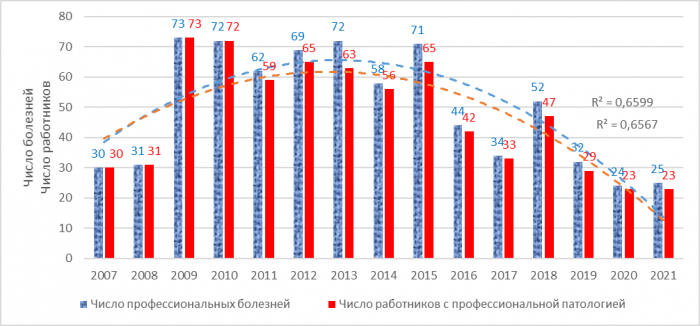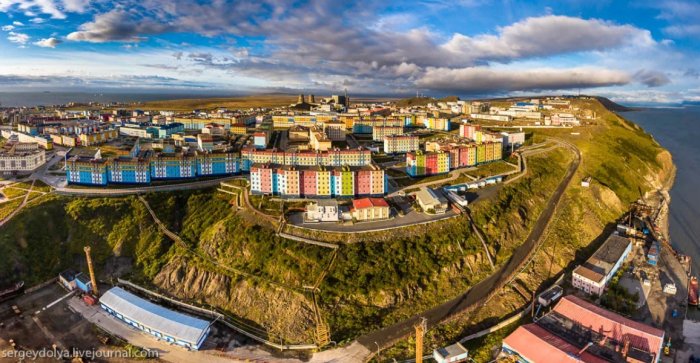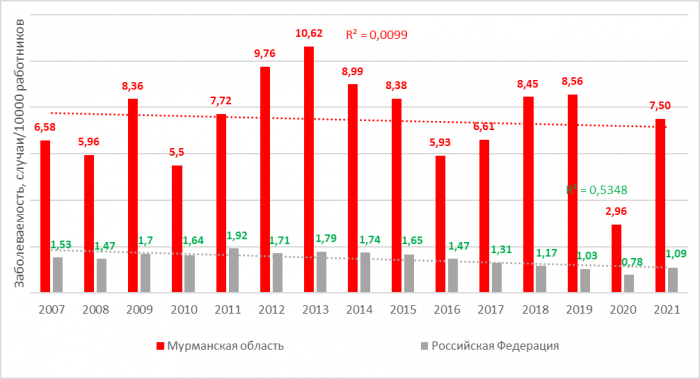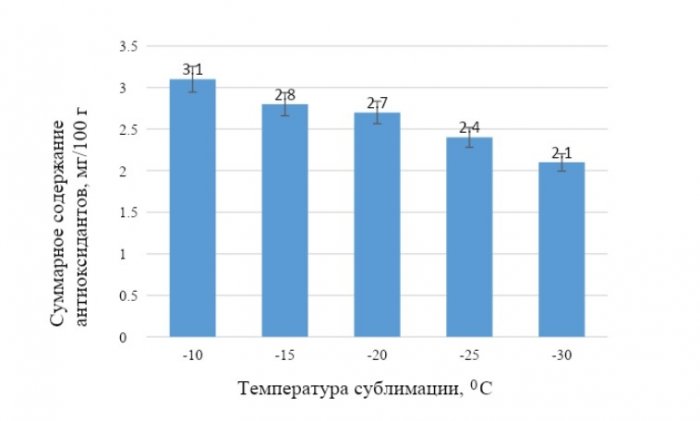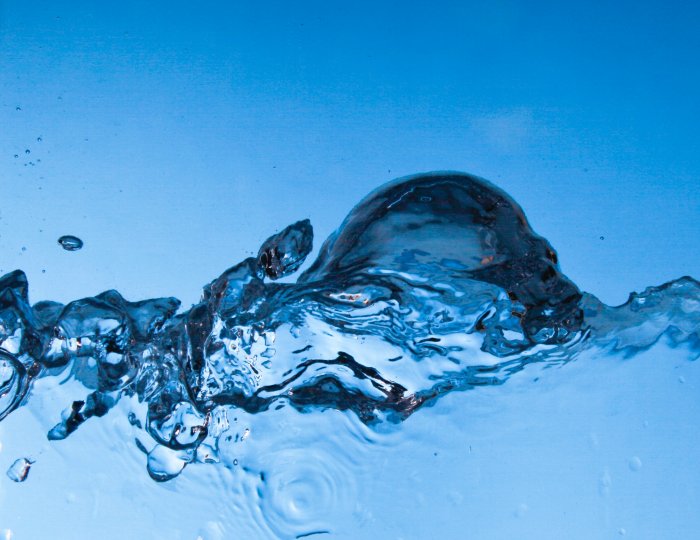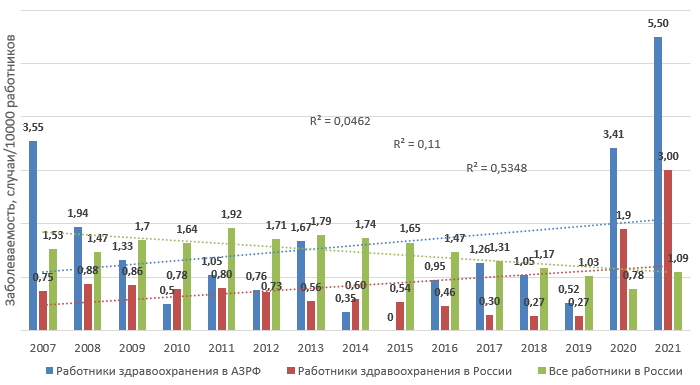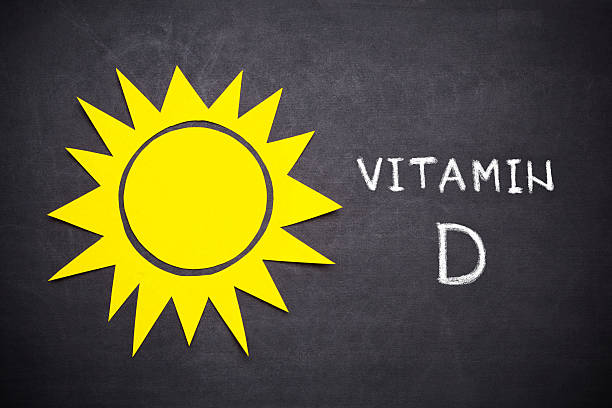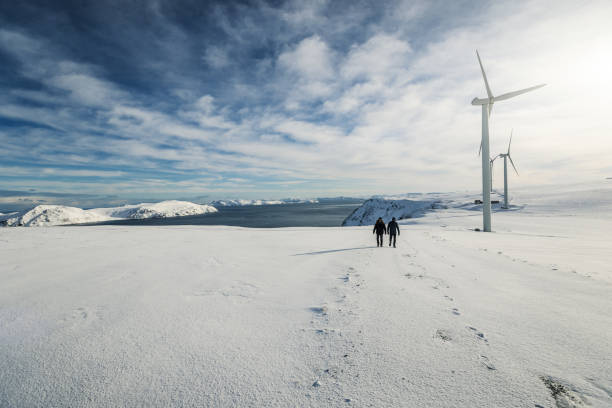Abstract
The results of a one-stage cross-sectional study of the indicators of the psychophysiological state of the body of medical students under 18 years of age and older who have been living for more than 1 year in the Murmansk region (group 1) and new arrivals from other regions of Russia who have been living locally for less than six months (group 2) are presented. The comparative assessment was carried out according to the methods of: C. D. Spielberger in the adaptation of Yu. L. Khanin (situational and personal anxiety); the stress level of Yu. V. Shcherbatykh "Comprehensive assessment of stress manifestations"; the degree of stress tolerance and social adaptation of Holmes–Ray; the degree of neuropsychiatric tension according to the integral indicator of the total deviation from the autogenic norm and the vegetative coefficient, the predominance of the influence of the sympathetic and parasympathetic nervous system on the regulation of adaptation processes and according to the test of M. Lusher's color perception. When compared by age criterion in a group of students aged 18 and older, subjective indicators of psychophysiological state are better than in a group under 18 with an optimal level of neuropsychiatric tension. It is shown that in the group of students living in the Murmansk region for more than one year, the indicators of psychophysiological condition are lower than those of new arrivals. This is expressed by the tension of psycho-emotional and physiological systems, the dominant influence of the sympathetic nervous system on the processes of regulation and the likely breakdown of adaptive mechanisms.
Introduction
The Arctic zone of the Russian Federation is located in the region of high latitudes, where the variability of the external environment is pronounced due to the structure of the Earth's magnetosphere and the oval of the auroras. Adaptive mechanisms of human adaptation are manifested both through physiological mechanisms (metabolic, hemodynamic and respiratory) and through a psychoemotional state (anxiety, stress) [1-4].Heliogeophysical, climatographic features, as well as age, gender, living conditions collectively affect the psychophysiological state of the inhabitants of the Russian Arctic. With prolonged, uncompensated exposure to environmental factors, it is possible to develop premorbid conditions, which later lead to diseases of the cardiovascular and respiratory systems[5,6]. Adaptation in extreme living conditions, the complex impact of non-runaway environmental and climatogeographic factors and their integral effect on the human body are shown in the works of a number of authors [7-14]. Medical students, in addition to the integrative impact of high-latitude environmental factors, also experience the psychoemotional impact associated with adaptation to a new social environment [15,16]. Previous studies have revealed that the PFS of medical students is worse than that of older women (medical staff). This is due to the fact that they carry a more pronounced allostatic load and are less adapted to changing environmental conditions [17]. The analysis of the literature data showed insufficient knowledge of the problem of rapid assessment of the PFS of specialists who arrived to study in the Russian Arctic and whose life activity in the future is associated with living conditions in the Far North.
Due to the fact that vital activity in conditions of high latitudes places high demands on the adaptive capabilities of the body and is conditioned by high vulnerability to environmental factors, the study will expand knowledge in the field of integrative assessment of the functional state of the body and will open up opportunities for timely detection of risk groups for the development of maladaptive disorders in the professional sphere.
Purpose: to study the psychophysiological condition (PFS) of students of the Medical College of the Arctic zone of the Russian Federation (AZRF), living for more than 1 year in the Murmansk region and newly arrived for training from other regions of Russia, living for less than six months.To conduct a comparative analysis of PFS in groups of students under the age of 18 and older.
Materials and methods
The results of a one-stage cross-sectional study of students' PFS are presented. At the first stage of the study, a comparative analysis of the data of students living for more than 1 year was carried out – these are persons born or permanently residing on the territory of the Murmansk Region (group 1) on the Kola Peninsula in the number of 69 people and those who arrived for training from other regions of Russia, living for less than six months (group 2) – 22 people (see Figure 1). At the second stage of the study, a comparative intergroup analysis of PFS data was performed depending on age: up to 18 years (16-17 years), (n=62, age 15.36±3.75), and after 18 years (24-31 years), (n=29, age 26.75±3.24), significant age differences were revealed (p = 0.002). At the time of the study, the residence time in the Murmansk region of the group under 18 years was (3.03±2.37), the group over 18 years (5.11±1.36).The 1st-year students of the KMC of Apatity, Murmansk region were studied in the number of 91 people (girls), who make up 14.44% of the total number of students, the average age is 18.67 ± 3.75 years.
It should be taken into account that adaptive changes in the psychophysiological state begin immediately after moving to the special climatogeographic conditions of the Russian Arctic, but implies their critical periods when indicators of adaptive capabilities are most pronounced: 1.5, 4, 7 and 14-15 years [18].
Selection criteria: no complaints at the time of the study, place of birth and main place of residence, absence of diseases in the acute stage of the course. The subjects were familiarized with the purpose and conditions of the study and submitted a written consent to the processing of personal data. Conclusion of the local Ethics committee, on the possibility of conducting a study, No. 11 dated 19.12.2016.
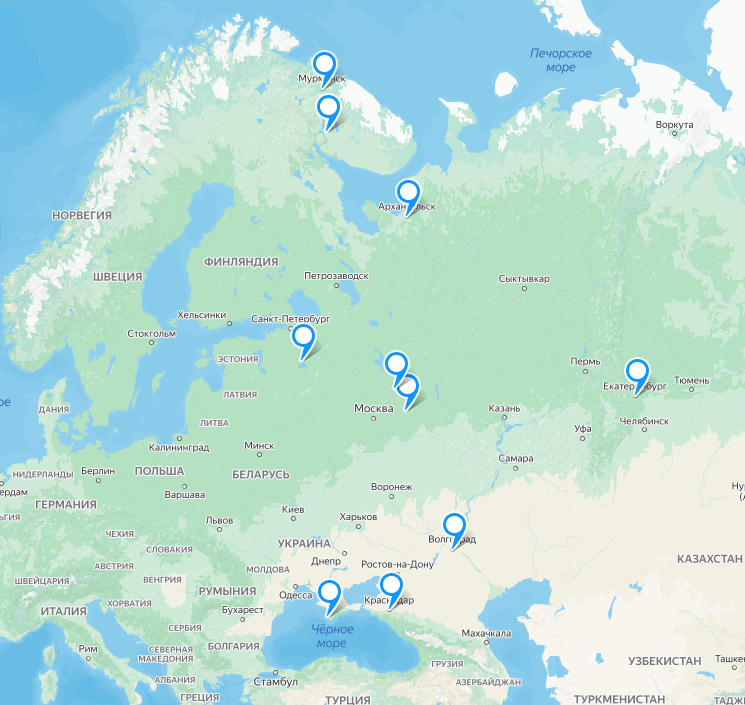
Figure 1. Geography of permanent residence of those who arrived to study in the Murmansk region (North-Western Federal District, Central Federal District, Ural Federal District, Southern Federal District, Republic of Crimea).
To assess PFS, the following methods were used: situational (CT) and personal (LT) anxiety was determined using the Ch. D. Spielberger – Y. L. Khanin test: low level – less than 30; average from 31-45 points; from 46 and more – high indicators [19]; well-being (C), activity (A), mood (H) was assessed in accordance with the differentiated functional state self–assessment (SAN) test: 50 and above – high, 30-50 – average and less than 30 points - low [20]; stress level according to the Yu. V. method. Shcherbatykh "Comprehensive assessment of stress manifestations": 0-5 – acceptable values, 6-12 – moderate stress, 13-24 – severe stress of emotional and physiological systems of the body, 25-40 – severe stress, 40 or more points – depletion of adaptive resources [21]; the degree of resistance to the stressful factor was assessed by the method of determining stress resistance and social adaptation of Holmes–Ray: high – 150-199, threshold – 200-299, low – 300 or more points [22, 23]; indicators of neuropsychic tension were determined using the M. Lusher color reference test. The results were processed using the software "ImatonShell" (IMATON). An integral indicator of the total deviation from the autogenic norm (CO) was used: 0-6 – absence, 8-12 – insignificant, 14-20 – average, 22-26 – increased, 28-32 points – a pronounced level of unproductive neuropsychic activity. The dominance of the sympathetic or parasympathetic departments of the autonomic nervous system was determined by the indicators of the vegetative coefficient (VC): VC>1 – the predominant influence of the sympathetic department, VC<1 – the predominant influence of the parasympathetic department [24].
The data obtained were processed using software: Microsoft Excel (Microsoft) and STATISTICA 10.0 (TIBCO). The data is presented in the form of the arithmetic mean (M) and the standard error of the mean (±m).Statistical differences using the nonparametric Mann-Whitney U–test were considered significant at p<0.05.
Results and discussion
An intergroup analysis of the data, according to the test of Ch.D.Spielberger – Y.L.Khanin, among the groups studied by the duration of residence showed a moderate level of CT and LT (see Table 1).These indicators correspond to the optimal or natural level of CT and LT for an active active person (useful anxiety).
Table 1. Comparison of psychophysiological indicators of medical students depending on the duration of residence in the Russian Arctic.

The intergroup data, according to the differentiated assessment test, in the studied groups showed the following results: C (U = 501.50, p = 0.52), A (U = 454.00, p = 0.023), H (U = 545.00, p = 0.89) are characterized as favorable. In group 1 and 2, the indicators are in the zone of comfortable values. This suggests that the subjective feelings of physiological, psychological comfort, interaction with the physical and social environment and the emotional background of the mood of the subjects are in the optimal range.
The data of the intergroup analysis according to the method of Yu. V. Shcherbatykh showed that in both groups, in response to a strong stress factor, there is a pronounced tension of the emotional and physiological systems of the body (U = 701.00, p = 0.53), which at the time of the study has not yet been compensated.
The analysis of the data in an intergroup comparison using the Holmes–Ray method determined high indicators of stress resistance (U = 545.00, p = 0.04). In group 1, the degree of resistance to stress loads is more pronounced and is (188.49 ±14.65), which indicates a high level of stress with more than 50% with a probability of some kind of psychosomatic illness. In group 2, the indicators are at a lower level, which corresponds to a low level of stress and a minimal probability of developing stress disorders, in contrast to group 1 (Table 1). There is a possibility that these indicators will change with a longer stay in northern conditions. Here you need to pay special attention to the data on this technique. In the group living for more than 1 year in the Murmansk region, the indicators of resistance to stressful factors are in the zone of threshold values. This suggests that the psychoemotional state of students in group 1 is at a level at which a breakdown of adaptation mechanisms and a transition to the development of maladaptive disorders is highly likely.
The data of the intergroup analysis of indicators of the degree of neuropsychic tension according to the method of M. Lusher indicate that the level of CO is within the average values (U = 578.50, p = 0.55). This makes it possible to perform the necessary duties within the average requirements, and also allows you to switch from one type of activity to another without much difficulty and fatigue. VC indicators in both groups are within the optimal values for the mobilization of physical and mental resources (U = 590.00, p = 0.63). This is manifested by an orientation to active activity, provided with the necessary energy resources with the dominance of the sympathetic department of the autonomic nervous system.
A comparison of the psychophysiological indicators of medical students, depending on age, is presented in Table 2. An intergroup analysis of data using the Holmes-Ray method showed that there were no significant differences in the studied groups (U=706.50, p=0.90), but the average indicators indicate a high risk of developing stress disorders and are unfavorable in prognostic terms due to reduction of adaptive capabilities and the development of psychosomatic diseases.
The analysis of data according to the method of Yu. V. Shcherbatykh did not reveal significant differences (U=679.50, p=0.70) between groups under 18 and older. At the same time, the indicators in both age groups indicate a sufficiently pronounced tension of both emotional and physiological systems of the body.
The intergroup data from the methods of Сh.D.Spielberger– Y.L.Khanin showed significant differences in the LT criterion (U=370.50, p=0.03), where a high level of anxiety is represented in the group under 18 years of age. The CT data using the same technique did not reveal significant differences and are within acceptable values indicating the necessary level of anxiety for daily activities.
The intergroup data on the differentiated assessment test in the studied groups showed significant differences between the groups in all categories: C (U=347.00, p=0.01), A (U=367.50, p=0.02), H (U=339.50, p=0.01). In the group of 18 years and older, the indicators in all categories are higher, which indicates a high level of physiological and psychological comfort of the subjects.
Table 2. Comparison of psychophysiological indicators of medical students depending on age.

The data of the analysis of the indicators of the degree of neuropsychic tension according to the method of M. Lusher showed significant differences between the groups in CO (U=401.00, p= 0.01), which indicates an immoderately excessive expenditure of neuropsychic resources and a low coefficient of efficiency in the group under 18 years. There were no significant differences in VC indicators between the groups (U=541.50, p=0.22). VC data from both groups indicate optimal mobilization of physical and mental resources.
Conclusions
A single-stage cross-sectional study showed the following results. A group of medical students living in the Murmansk region for more than 1 year has more unfavorable indicators of psychophysiological condition than newly arrived students. The data of the total deviation from the autogenic norm and the vegetative coefficient in the groups show an average level of unproductive neuropsychic activity, which manifests itself in a long period of reduced performance after active activity and the dominant influence of the sympathetic department of the autonomic nervous system on the regulation of the functional systems of the body. Indicators of a comprehensive assessment of stress manifestations in groups living for more than 1 year in the Murmansk region are more pronounced and indicate a high resistance to the depressing factor, this leads to an uncompensated impact of environmental factors and is manifested by a certain tension of the emotional and physiological systems of the body with a possible disruption of adaptive capabilities. At the same time, there were no significant differences in the methods of SAN and Ch.D.Spielberger – Yu.L.Khanin. When categorizing by age, subjective indicators of the psychophysiological state are more pronounced in the group of 18 years and older, which indicates a more stable formation of the adaptive mechanisms of the body in this age group.References:
-
Kaznacheev V.P. Sovremennye problemi adaptacii cheloveka // V knige: Adaptaciya i problemi obshchej patologii. Tezisy dokladov Vsesoyuznoj konferencii. [Modern problems of human adaptation. In the book: Adaptation and problems of general pathology.] Abstracts of reports of the All-Union Conference. 1974. pp.3-9.(In Russian.).
-
Filippova S.N. Osobennosti adaptacii v zavisimosti ot funkcional'noj asimmetrii mozga i faktora pola u prishlyh zhitelej Zapolyar'ya [Features of adaptation depending on the functional asymmetry of the brain and the sex factor in the alien inhabitants of the Arctic.] Bulletin of the SB AMN of the Russian Federation. 2000. pp.108-110. (In Russian).
-
Hasnulin V.I., Hasnulina A.V. Sezonnaya dinamika funkcional'nyh pokazatelej u severyan – uchastnikov proekta «MARS–500» //Adaptaciya cheloveka k ekologicheskimi social'nym usloviyam Severa /Otv. red. E.R. Bojko. [Seasonal dynamics of functional indicators among Northerners participating in the MARS-500 project. Human adaptation to environmental and social conditions of the North / Ed. by E.R. Boyko.] Syktyvkar UrO RAS. 2012. pp.22-28 (In Russia).
-
Davis S., Mirck D.K. Circadian disruption, shift work and the risk of cancer: a summary of the evidence and studies in Seattle //Cancer Causes Control. 2006. Vol. 17.P. 539–545.) DOI: 10.1007/s10552-005-9010-9
- Agadzhanyan N.A., Ermolaeva N.V. Ekologicheskij portret chelovekа na Severe. M.: Kruk. 1997. 208 s.[Ecological portrait of a man in the North.] M.: Kruk. 1997. 208 p.(In Russian).
- Krivoshchekov S.G., Ohotnikov S.V. Proizvodstvennye migracii i zdorov'e cheloveka na Severe. [Industrial migrations and human health in the North]. Moscow - Novosibirsk. 2000. 118 p.(In Russian).
- Boiko E.R., Burykh E.A. Nitric oxide metabolites level in human serum in acute normobaric hypoxia // Russian Journal of Physiology.2012.Т. 98. № 1. С. 147–154.
- Boiko E.R. Zhizn' i zdorov'e cheloveka na severe. V sb.: Evropeiskaya zona rossiiskoi Arktiki: stsenarii razvitiya. Materialy Vserossiiskoi nauchnoi konferentsii (s mezhdunarodnym uchastiem) v 2 chastyakh.[Human life and health in the north. In the collection: The European zone of the Russian Arctic: development scenarios. Materials of the All–Russian Scientific Conference (with international participation) in 2 parts.]2017. С. 19–22. (In Russian).
- Markov A.L., SoloninYu.G., Boiko E.R. Vliyanie meteorologicheskikh parametrov na vegetativnuyu regulyatsiyu ritma serdtsa u zhitelei evropeiskogo severa: individual'nyi kontrol' / Vestnik Tverskogo gosudarstvennogo universiteta. Seriya: Biologiya i ekologiya. [The influence of meteorological parameters on the vegetative regulation of heart rhythm in the inhabitants of the European North: individual control / Bulletin of Tver State University. Series: Biology and Ecology.] 2018. № 1. С. 21–29. (In Russian)
- Belisheva N.K., Martynova A.A. [i dr.] Vozrastnye osobennosti variabel'nosti serdechnogo ritma u detei doshkol'nogo vozrasta, prozhivayushchikh v usloviyakh Evro–arkticheskogo regiona // Fiziologiya cheloveka. [Age–related features of heart rate variability in preschool children living in the conditions of the Euro-Arctic region // Human Physiology.] 2016.Т.42.Т2. С49. (In Russian)
- Belisheva N.K., Pryanichnikov S.V. [i dr.] Arkhipelag Shpitsbergen – poligon dlya analogovykh issledovanii vozdeistviya kosmofizicheskikh agentov na organizm cheloveka // Vestnik Kol'skogo nauchnogo tsentra RAN [The Svalbard Archipelago is a testing ground for analog studies of the effects of cosmophysical agents on the human body // Bulletin of the Kola Scientific Center of the Russian Academy of Sciences] 2017. №4. С. 22–29. (In Russian)
- Belisheva N.K., Martynova A.A. [i dr.] Svyaz' parametrov mezhplanetnogo magnitnogo polya i solnechnogo vetra v oblasti polyarnogo kaspa s psikhofiziologicheskim sostoyaniem zhitelei arkh. Shpitsbergen // Vestnik KNTs RAN [The relationship of the parameters of the interplanetary magnetic field and the solar wind in the polar Caspian region with the psychophysiological state of the inhabitants of the arch. Svalbard // Bulletin of the KNC RAS] 2018. №4 С.5–12. (In Russian)
- Bartosh T.P. Issledovanie psihofiziologicheskih i psihologicheskih harakteristik zhitelej, prozhivajushhih v uslovijah Severo-Vostoka Rossii//Vestnik psihofiziologii.[Research of psychophysiological and psychological characteristics of residents living in the conditions of the North-East of Russia//Bulletin of Psychophysiology].2022. №1. Том 1. С. 83-93. Psychophysiology News. 2022. No. 1-1. P. 83-93. DOI:10.34985/l6754-7589-6888-l
- Bartosh O. P., Bartosh T.P. Mychko M.V. Features of anxiety and attention in elementary school students of the Russian North Russian Open Medical Journal. 2021 Volume 10. Issue 3: e0314 DOI: 10.15275/rusomj.2021.03
- Linda M Moscaritolo. Interventional strategies to decrease nursing student anxiety in the clinical learning environment. Journal of Nursing Education. 2009. Vol. 48(1). P. 17–23.DOI: 10.3928/01484834-20090101-08
- Shearer J. Anxiety, nursing students, and simulation: State of the science. Journal of Nursing Education. 60 2016. Vol. 55(10). P.551–556. DOI: 10.3928/01484834-20160914-02
- Solov'evskaya N.L., Tereshchenko P.S. Psikhoemotsional'noe sostoyanie meditsinskikh sester psikhiatricheskogo profilya v usloviyakh Arktiki // Konsul'tativnayapsikhologiyaipsikhoterapiya. [Psychoemotional state of psychiatric nurses in the Arctic conditions // Consultative psychology and psychotherapy] 2021. Т. 29. № 2. С. 164—184. (In Russian)
- Korolenko C. P. Psihofiziologija cheloveka v jekstremal'nyh uslovijah. [Human psychophysiology in extreme conditions]. L., «Medicina», 1978, 272 p.
- Eliseev O. P. Praktikum po psihologiilichnosti: 2-e izd., ispr. ipererab. [Practicum on personality psychology: 2nd ed., ispr. and reprinted] St. Petersburg: Piter, 2002. 512 p.(In Russian.).
- Doskin V.A. Test differencirovannoj samoocenki funkcional'nogo sostoyaniyam [Test of differentiated self-assessment of functional state.] Questions of psychology. - 1973, - No. 6. - pp.141-145. (In Russian).
- Shcherbatyh YU. V. Psihologiya stressam i metody korrekcii. [Psychology of stress and methods of correction.] - St. Petersburg: Peter, 2006. - 256 p. (In Russian).
- Holmes Т.Н., Rahe R.H. The Social Readjustment Rating Scale. Journal of Psychosomatic Research. 1967. Vol. 11. P. 213-218. DOI: 10.1016/0022-3999(67)90010-4
- Rahe R.H., Arthur R.H. Life change and illness studies. Journal of Human Stress. 1978. 4(1). 3-15 DOI: 10.1080/0097840X.1978.9934972
- Tokareva N.G. O nekotoryh pokazatelyah psihicheskogo zdorov'ya podrostkov [On some indicators of mental health of adolescents.] Health and education in the XXI century 2017 pp. 153-158.(In Russian). http://dx.doi.org/10.26787/nydha-2226-7425-2017-19-12-153-158 This is an open access article distributed under the terms of the Creative Commons Attribution License (CC-BY 4.0)
